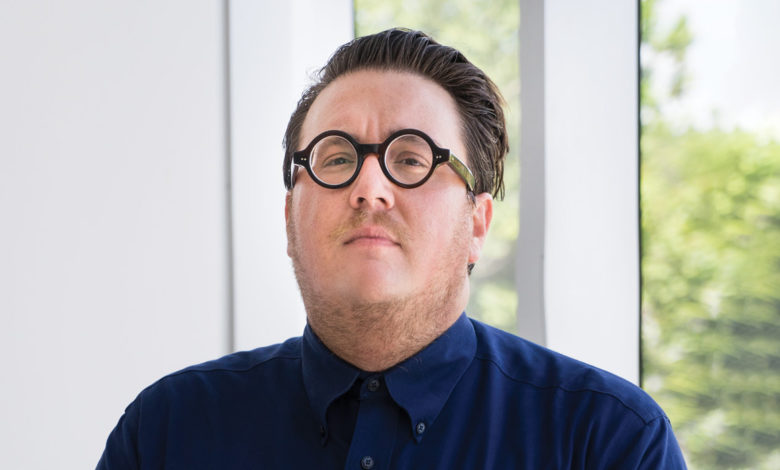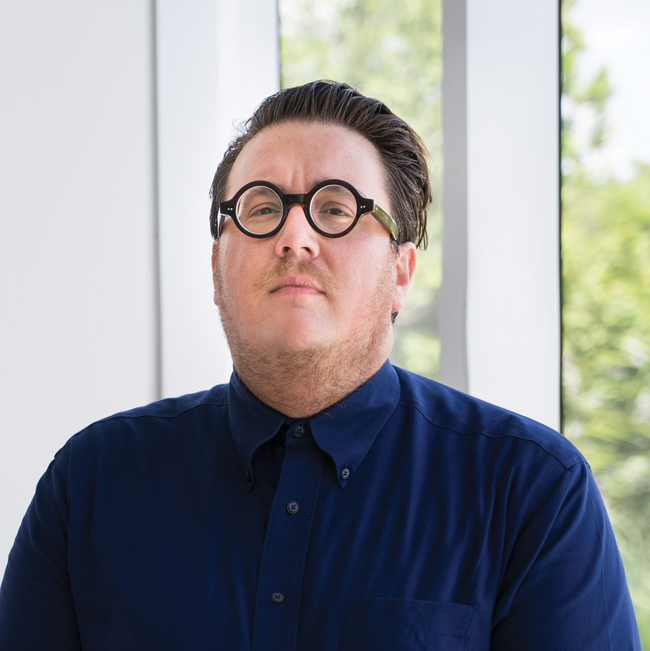
An Interview with Tommy Ralph Pace
The Orange Show Center for Visionary Art welcomes a new director with big plans for Houston’s creative scene.

You’re moving to Houston from Miami. Who are you bringing with you, and where do you plan to live?
I’m coming to Houston with my partner, Dick, and our cat, Bruce. We found a great duplex for rent in the Montrose neighborhood, an area everyone said was a good place for someone coming from out of state. We’re very excited.
Once you settle in, which parts of the city do you plan on exploring first?
Probably the Project Row Houses in Third Ward. I also plan on checking out the Rothko Chapel, the Menil Collection, and all of the historic fine-art museums. Houston is a real leader in the art world. It also has amazing architecture.
What do you like to do for fun?
My father ran one of Miami’s recording studios, and even recorded Gloria Estefan’s first album, so music has always been a huge part of my life. (Unfortunately, COVID has put a big dent in my social calendar, in terms of my ability to see live music.) I also love bike riding, traveling, and watching bad TV. [Laughs] And food. As a larger guy, I’m very excited to be moving somewhere where there are plenty of opportunities to walk and plenty of opportunities to eat great food.
You previously served as the deputy director for the Institute of Contemporary Art, Miami. How do you think that experience will influence your decision-making at the Orange Show Center for Visionary Art?
My role at the Institute was to create the framework for the organization’s mission [to become] the center for the exchange of art and ideas in Miami. I plan to help the Orange Show expand its own programmatic footprint in Houston, along with the scope of its mission, which is to promote artistic expression and create communities where that expression is valued. This is something I think local audiences are really going to be engaged in.
Houstonians should start getting excited about what’s coming next from the Orange Show, including a reinvestment in some broader cultural programming. And of course, when it’s safe, the Houston Art Car Parade will be coming back in full force.
How does being an openly gay man impact your artistic vision?
Not so much aesthetically, but the gay community is such a creative community, and it has always made me feel like I’m part of a larger network. That’s an openness that many don’t get to experience in their professional fields. So maybe it affects my practice in the sense that it gives me a perspective of gratitude.
The arts have suffered tremendously due to COVID-19 restrictions. What are your predictions for how the art world will look in 2021?
The pandemic has changed our appetite for the way we consume culture. I don’t know that we’ll be able to return to that same [pre-pandemic] rate of art consumption. Let’s hope that with the vaccine on its way, we’ll be able to go back to concerts and other in-person events really soon. I do think there is going to be a reserved approach to that, though.
How do you plan to help Houston restore its thriving creative community?
Creative expression is important to leading a healthy and balanced life. One of the things we plan to do post-COVID is invest in our digital footprint for the types of digital experiences people have around self-taught art. We’ll also be looking toward more green spaces, like Smither Park. Houston is already known for its public art, so I think there’s a great future for more public program spaces that think “culture first.”
For more information about the Orange Show Center for Visionary Art, visit orangeshow.org.
This article appears in the January 2021 edition of OutSmart magazine.











Comments